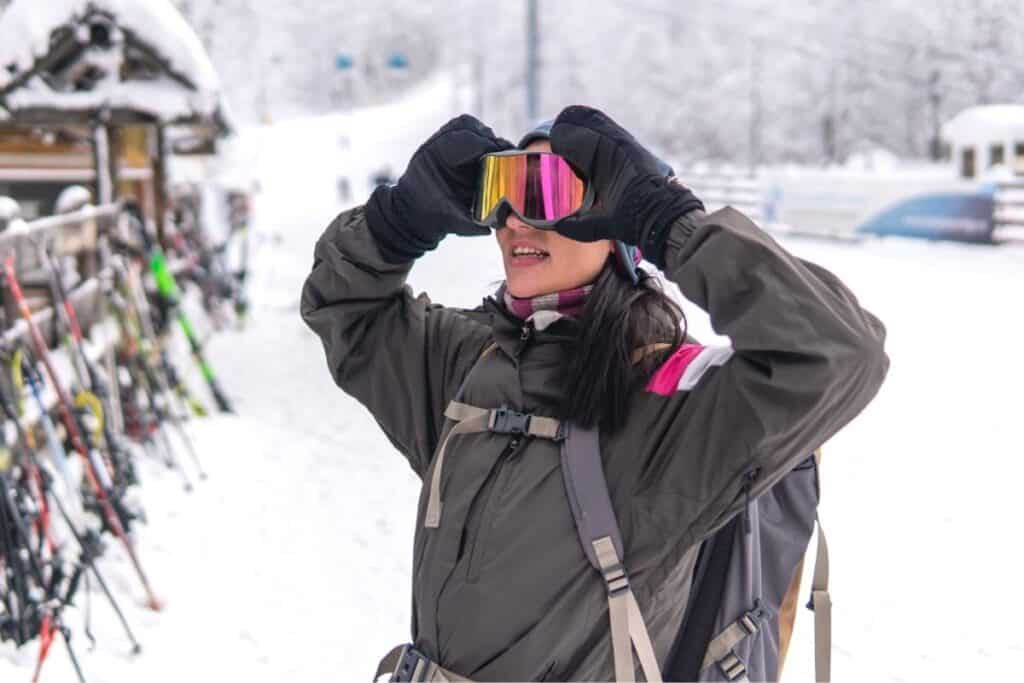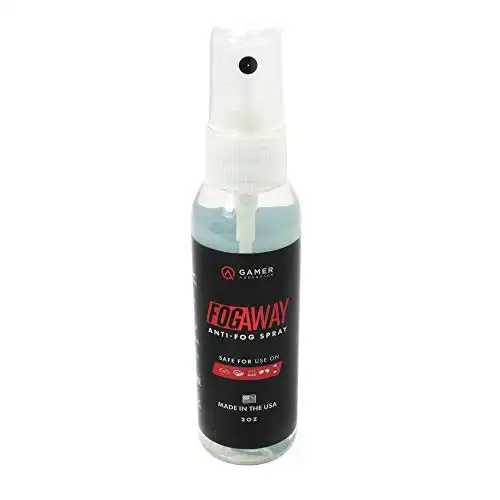
There are several reasons to wear goggles when you go skiing or snowboarding, and many outdoor enthusiasts won’t consider participating in these activities without that kind of protection.
Snow goggles are not required for skiing or snowboarding, but they provide several key benefits. These benefits include an increased field of view, shatter-resistant lenses, and anti-fog coatings that generally improve your experience on the mountain.
I’ll go over goggle usage for skiing and snowboarding and other eyewear options you can consider before hitting the slopes.
Do I Need Goggles to Ski or Snowboard?
Goggles play a few key roles when you go skiing or snowboarding. First, they can protect your eyes from harmful UV rays that can burn your eyes since they are stronger at higher altitudes.
The sun reflecting off the snow can damage your eyes and make it much harder to see contours in the snow as you move down the mountain.
Goggles also protect your eyes from debris like snow and ice when you’re moving, and they can also provide some protection against unseen tree branches, twigs, leaves, and other plant matter you might encounter.
Many googles also have tinted lenses that can keep the sun out of your eyes, increase how much you can see in certain types of lighting, and keep the wind from drying your eyes out.
Goggle Features that Make Them Worth Wearing
Another benefit of goggles is that they are less likely to accumulate condensation as you use them thanks to some key features:
- Anti-fog coating on lenses
- Lenses with two layers
- Vents for critical airflow
- Fans
Only higher-end goggles will typically have fans, and these tiny devices run on battery power and work to disperse moisture that accumulates over a prolonged time. Anti-fog coatings come on just about all mid to high-level goggles, and these coatings help reduce fogging.
How well these coatings work depends on the design of the goggles and the amount of moisture present, and they sell anti-fog coatings that you can manually apply to lower-end goggles as needed.
Fog Away is a proprietary long lasting solution that delivers fog-free performance in just a few sprays. It is safe and effective to use all lens types, including those with anti-reflective properties.
If you aren’t skiing or snowboarding in extreme weather, then vents on the top, bottom, and sides of your goggles can help disperse moisture that would otherwise cause the goggles to fog up.
These vents allow for airflow without drying out your eyes or allowing snow to enter so you can comfortably wear them, although some individuals find that their face gets cold.
Most goggles will also have lenses with at least two layers as this characteristic helps prevent fogging while also providing a thermal layer.
When the goggles properly seal to your face, the multi-layered lenses create a thermal barrier similar to traditional storm windows on a house.
A Note on Lens Color and Light
It’s possible to get goggles with different colored lenses, and some goggles allow you to change out a layer of the lens.
The amount of light that comes through the lens and enters your eyes is called the Visible Light Transmission (VLT). By using darker or lighter lenses, you can change how you see as you ski or snowboard.
Clear lenses are ideal for skiing at night, but these are often not comfortable to wear during the day, even if it’s overcast. Lighter lenses allow more light to pass through, have a higher VLT, and work best when it’s cloudy or overcast.
Light-colored lenses often come in colors such as:
- Gold
- Amber/brown
- Yellow
- Green/greenish blue
- Rose
Each brand will have slightly different colors, but in general, you can try out a few shades and decide what is most comfortable for the conditions where you’ll be outside.
Darker lenses don’t let nearly as much light through, so their VLT is much lower, and this means that they’re ideal for sunny days on the slopes when the light is at its peak.
Darker lenses often feature colors such as copper, brown, grey and may also have a reflective coating on the outside.
Do Beginner Skiers Need Goggles?
When you’re first starting out, goggles are not always a requirement, but if you take lessons from the resort you’ll be visiting, you’ll want to check their safety guidelines to see if you’re required to wear them.
For beginners, the answer to the question “do I need goggles to ski/snowboard?” may also hinge on the conditions you expect to encounter while on the mountain and how sensitive your eyes are to light, the cold, wind, and other conditions.
If you’re just learning how to ski or snowboard, having a wider field of vision can help you make better judgments about your movement, and the snug fit means they’ll stay in place if you fall.
Goggles are also far more likely to survive when you fall and offer more excellent protection for your eyes.
With those benefits in mind, it’s also worth noting that you may still have some fogging issues whether you wear sunglasses or goggles.
The fogging will be less noticeable with goggles thanks to the restricted airflow, but many people find that sunglasses are more comfortable when they first get acquainted with skiing or snowboarding.
Can you Ski with Normal Sunglasses?
If the conditions are right, it’s possible to ski with regular sunglasses, but not all sunglasses will work well for this application.
Sunglasses with the proper tint can help keep the sun out of your eyes and prevent damage to your eye in the form of sunburn, but they may not be the best idea from a visibility standpoint.
Sunglasses do not offer the same field of view that you get with goggles, and many sunglass designs also won’t stay on your head should you hit a bump, stumble, or fall.
It’s also worth noting that not all sunglasses have lenses that resist shattering on impact, and that can pose an additional risk to your eyes and face.
If the temperatures are warm and there’s no wind, you might be able to wear sunglasses for skiing or snowboarding. If you’re a beginner, you may want to choose sunglasses with shatterproof lenses that also offer you a wide field of view.
So, if you’re wondering, “do I need goggles to ski/snowboard” and you can’t decide, keep in mind that many resorts rent this type of equipment so you can try them out for a small fee.
There are also some inexpensive goggle options online that cost as little as $10.
Can You Ski with Eyeglasses?
Yes, many people ski and snowboard while wearing eyeglasses, but this may take a little getting used to as they can fog and shift around as you move.
Eyeglasses may also be more vulnerable to damage when you fall, and it’s worth noting that they won’t provide all the same protections for your eyes as goggles.
Many goggles will fit over conventional eyeglasses, so it’s worth checking to see how compatible your eyeglasses are with a few different goggles.
Eyeglasses alone may also not be enough to filter out the bright light that reflects off the snow, even if they have lenses that darken when exposed to sunlight.
Eyeglasses also won’t protect your eyes as well from snow, ice, and other debris when you’re skiing, and if you’re prone to dry eyes, they won’t do much to restrict airflow around your face either.
If you intend to wear your glasses under goggles, you can get your goggles a size bigger, which will allow for a more significant amount of room so that your eyeglasses don’t get pushed up on your face or pinch you.
Final Thoughts
If you’re asking, “do I need goggles to ski/snowboard?” you may be surprised to learn that many individuals swear by this piece of equipment, while a few still choose to use sunglasses instead.
While goggles offer a myriad of benefits such as protection for your eyes, anti-fog qualities, and a secure fit, they’re not the only option for eyewear.
Related Articles
If you found this article helpful, then make sure to take a look at some of my other related articles linked below!

